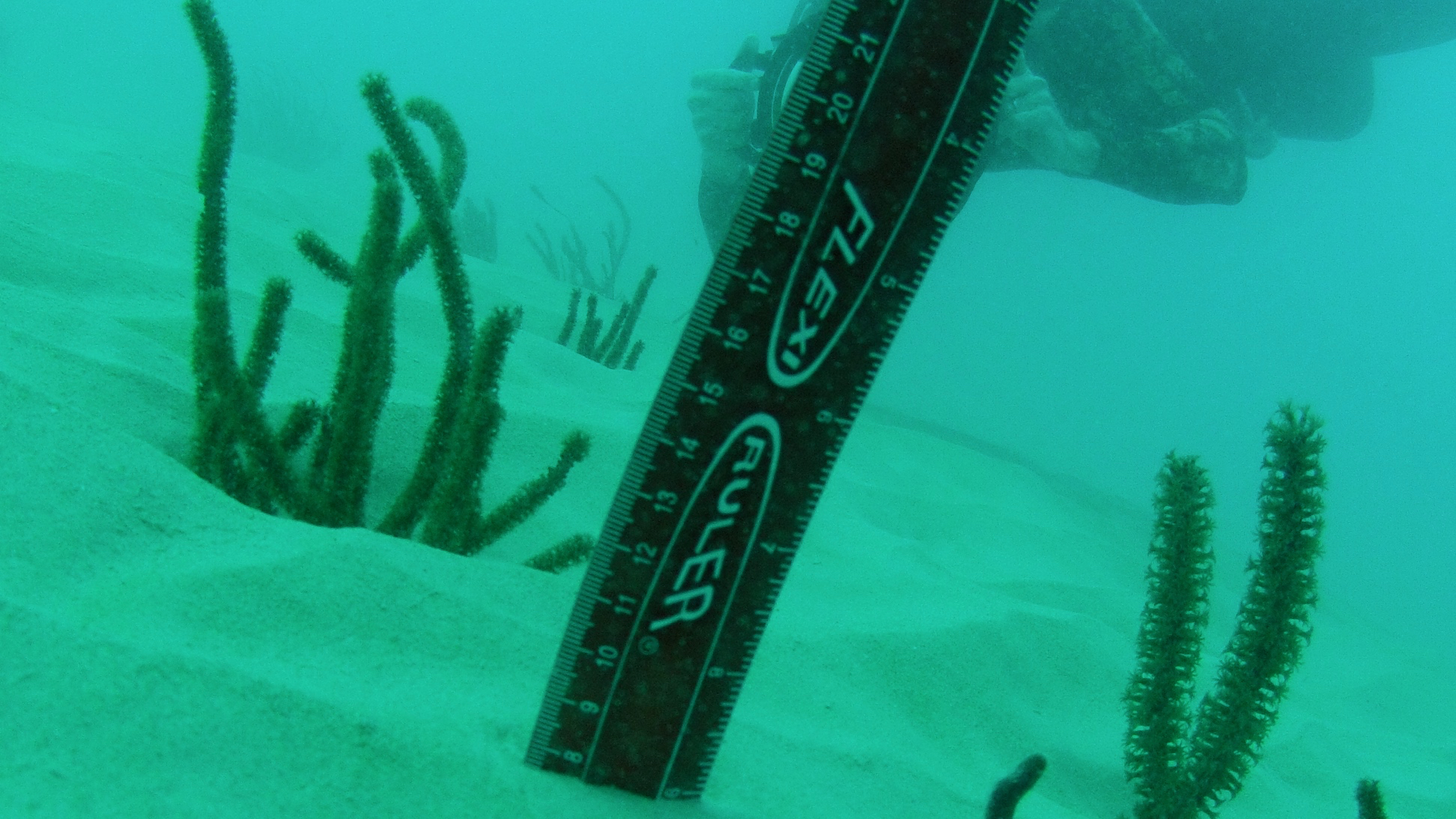MIAMI—A team of researchers including scientists at the University of Miami (UM) Rosenstiel School of Marine and Atmospheric Science, published new findings that reveal significant damage to Miami’s coral reefs from the 16-month dredging operation at the Port of Miami that began in 2013. The study found that sediment buried between half to 90 percent of nearby reefs, resulting in widespread coral death.
The results, published in the journal Marine Pollution Bulletin, estimate that over half a million corals were killed within 550 yards (500 meters) of the dredged channel, and that dredging impacts may have spread across more than 15 miles (25 kilometers) of Florida’s reef tract.
“Coral reefs worldwide are facing severe declines from climate change,” said Andrew Baker, associate professor of marine biology and ecology at the UM Rosenstiel School and senior author of the study. “If we want to conserve these ecosystems for the generations that come after us, it’s essential that we do all we can to conserve the corals we still have left. These climate survivors may hold the key to understanding how some corals can survive global changes. We have to start locally by doing all we can to protect our remaining corals from impacts, like dredging, that we have the ability to control or prevent.”
The researchers reanalyzed data originally collected by consultants as part of the dredge’s environmental monitoring program. This program had attributed most of the documented coral losses in the area to a region-wide outbreak of coral disease that occurred at the same time. The new study controlled for these impacts by looking at losses of coral species that were not susceptible to the disease and by testing whether corals closer to the dredge site were more likely to die during the dredge period than those further away. The new analysis revealed that most of the documented coral losses near the Port of Miami were in fact the result of dredging.
“It was important to differentiate these multiple impacts occurring on the reefs to understand the direct effects of dredging specifically,” said lead author Ross Cunning, who began the project while a postdoctoral scientist at the UM Rosenstiel School and is now a research biologist at the Shedd Aquarium in Chicago. “We brought together all the available data from satellites, sediment traps, and hundreds of underwater surveys. Together, the multiple, independent datasets clearly show that dredging caused the major damages observed on these reefs.”
Florida’s reef tract is the only nearshore reef in the continental United States, and coral cover has declined by at least 70 percent since the 1970’s. Staghorn corals, which were once common in shallow water, have declined an estimated 98 percent and are now threatened species under the Endangered Species Act. The affected areas adjacent to the dredge site are of high conservation value and have been designated as “critical habitat” for the recovery of these threatened staghorn corals. Nationwide, coral reefs provide over $1.8 billion in flood risk reduction annually.
The researchers also studied whether sediment plumes – milky clouds of suspended dredging sediment visible from space – could predict impacts observed on the reefs below. The authors found that plumes detected using satellites had a remarkably high correlation with impacts documented on the seafloor. This is the first study to show that satellite data can be reliably used to predict dredging impacts on corals and their habitats.
“This connection allowed us to predict impacts beyond where ship-based monitoring was taking place, and showed that dredging likely damaged this reef several kilometers away,” said study co-author Brian Barnes of the University of South Florida. “While this same relationship may not apply in all projects, this is a remarkable finding that further establishes Earth-observing satellites as independent monitoring tools to fill in gaps where data are otherwise not available.”
“This study provides a clear and scientifically robust estimate of the impact of this dredging project on Miami’s coral reef resources. It tells a devastating story of loss that we cannot afford to ignore any longer,” said Rachel Silverstein, executive director and waterkeeper of Miami Waterkeeper and a co-author of the study. “We hope that these findings will provide valuable information to guide restoration of the impacted reefs and prevent these kinds of impacts in the future.”
The study, titled “Extensive coral mortality and critical habitat loss following dredging and their association with remotely-sensed sediment plumes,” was published in the August 2019 online issue of the journal Marine Pollution Bulletin.

